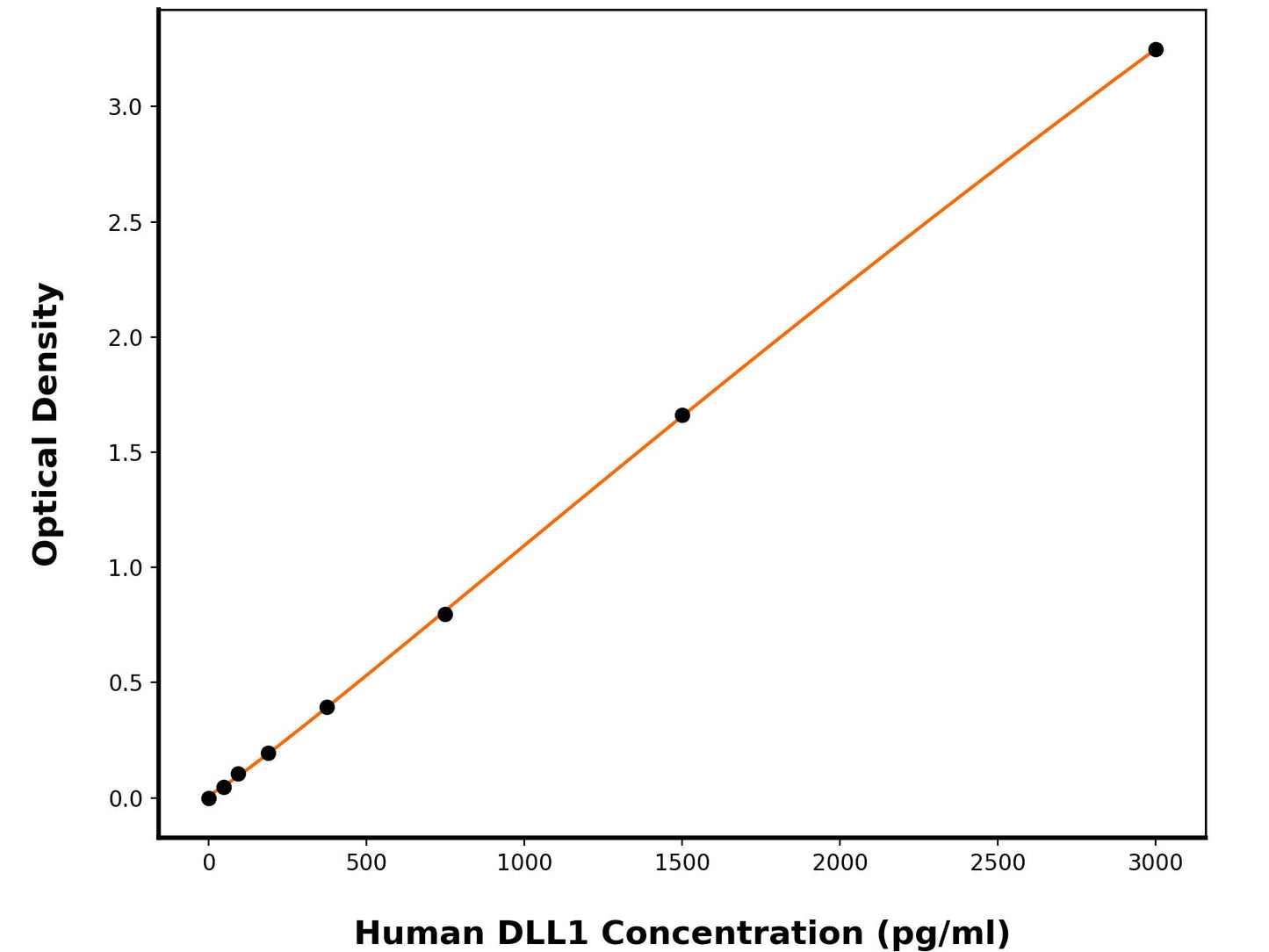1
/
of
1
Human Delta-Like Protein 1 (DLL1) ELISA Kit
Human Delta-Like Protein 1 (DLL1) ELISA Kit
This ELISA kit is designed to detect Human Delta-Like Protein 1 (Human DLL1). The assay plate has been pre-coated with mouse anti-Human DLL1 monoclonal antibody. When the sample containing DLL1 is added to the plate, it binds to the antibodies coated on the wells. Then, a horseradish peroxidase conjugated mouse anti-Human DLL1 Antibody is added to the wells and binds to DLL1 in the sample. After washing the wells, substrate solutions are added, and the color intensity is directly proportional to the amount of Human DLL1 present. The reaction is stopped by adding an acidic stop solution, and the absorbance is measured at 450 nm.
Catalog No:
BPE210
Regular price
$624.00 USD
Regular price
$480.00 USD
Sale price
$624.00 USD
Unit price
/
per
2 weeks
Couldn't load pickup availability
Product Details
Species Reactivity
Human
Sensitivity
13.28 pg/mL
Detection Range
46.88-3000 pg/mL
Sample Type
Serum, plasma, cell culture supernates
Incubation(s)
3.5 hour(s)
Research Areas
Developmental Biology, Epigenetics and Nuclear Signaling, Neuroscience, Stem cells
Background
Delta-like protein 1(DLL1), also known as Delta1, a single-pass type I membrane protein which contains one DSL domain and eight EGF-like domains, acts as a ligand for Notch receptors, and positively regulates T-cell development. DLL1 is proteolytically processed in a similar manner to the Notch receptor, and it has been speculated to participate in bidirectional signaling. The proteolytic processing of DLL1 helps achieve an asymmetry in Notch signaling in initially equivalent myogenic cells and helps sustain the balance between differentiation and self-renewal. Interactions between DLL1 and Notch in trans activate the Signal transduction, whereas DLL1 binding to Notch in cis inhibits Notch signaling. DLL1 undergoes proteolytic processing in its extracellular domain by ADAM10. It had been demonstrated that DLL1 represents a substrate for several other members of the ADAM family. In co-transfected cells, DLL1 is constitutively cleaved by ADAM12, and the N-terminal fragment of DLL1 is released to medium. ADAM12-mediated cleavage of DLL1 is cell density-dependent, takes place in cis orientation, and does not require the presence of the cytoplasmic domain of ADAM12. Full-length DLL1, but not its N- or C-terminal proteolytic fragment, co-immunoprecipitates with ADAM12. By using a Notch reporter construct, we show that DLL1 processing by ADAM12 increases Notch signaling in a cell-autonomous manner. Furthermore, ADAM9 and ADAM17 have the ability to process DLL1. In contrast, ADAM15 does not cleave DLL1, although the two proteins still co-immunoprecipitate with each other. During fetal development, DLL1 is an essential Notch ligand in the vascular endothelium of large arteries to activate Notch1 and maintain arterial identity. DLL1-Notch signaling was required for VEGF receptor expression in fetal arteries.
Shipping Condition
Shipped on cold gel packs.
Storage Condition and Shelf Life
This product can be stored at 2-8C.
Analyte
Delta-like protein 1
Regulatory Status
For Research Use Only

